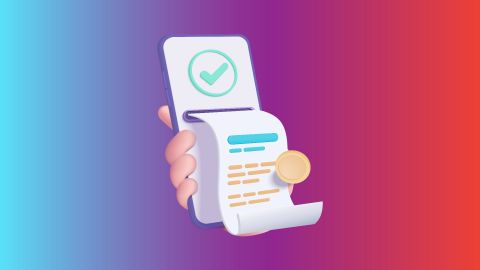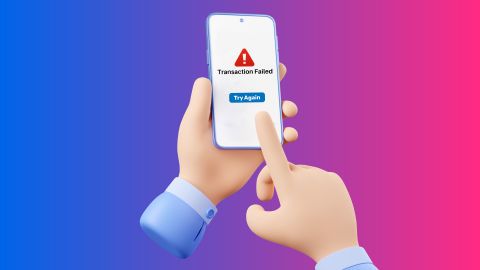What is a micro ATM
Micro ATMs are compact versions of traditional automated teller machines (ATMs) that facilitate basic banking transactions. These ATMs play a pivotal role in extending financial services to remote and underserved areas. Especially in areas where access to brick-and-mortar banks is limited. These handheld devices empower users to conduct various financial operations. These include cash withdrawals, balance inquiries, and fund transfers, making use of a debit card.
How does a micro ATM work
Micro ATMs function within a network established by banks and financial institutions. Equipped with these devices, authorised agents traverse rural and semi-urban regions. They do so with the aim of providing essential banking services to the unbanked population. Customers can conveniently approach these agents, swipe their debit cards, and securely complete transactions.
- Function: Micro ATMs can be used for basic banking transactions like cash withdrawal, balance inquiries, and sometimes even cash deposits and fund transfers.
- Operation: They connect to the bank network using mobile data (GPRS) and rely on the BC to verify customer identity and dispense cash.
- Benefits: Micro ATMs are beneficial for both customers and BCs. Customers in remote locations get access to banking services, while BCs earn a commission on every transaction.
Here are some key things to remember about micro-ATMs:
- Interoperability: They are usually designed to work with all banks, allowing customers from any bank to conduct transactions using their debit card or Aadhaar number for biometric authentication.
- Security: Micro ATM transactions are secure as they use two-factor authentication for verification.
Micro ATM cash withdrawal process
Withdrawing cash using a micro ATM is straightforward and convenient, especially in areas where traditional ATMs are scarce. Here's a step-by-step guide:
- Visit a micro ATM location: Go to a location where a micro ATM is available, such as a local shop or a banking correspondent.
- Provide your bank details: Inform the operator of your bank name and provide your Aadhaar number or debit card.
- Choose the transaction type: Specify that you want to withdraw cash.
- Authenticate the transaction: Use biometric authentication (fingerprint) or enter your PIN to verify your identity.
- Enter the amount: Specify the amount you wish to withdraw.
- Complete the transaction: Once authenticated, the operator will hand you the cash, and you will receive a transaction receipt.
Features of Micro ATMs
Micro ATMs are designed to extend banking services to remote and underserved areas. Key features include:
- Portability: These devices are compact and portable, making them easy to transport and set up in various locations.
- Biometric authentication: Equipped with fingerprint scanners, micro ATMs ensure secure transactions through biometric verification.
- Multiple connectivity options: They can connect to banking networks via GPRS, 3G, or 4G, ensuring reliable operation even in areas with limited internet connectivity.
- Basic banking services: Micro ATMs support cash withdrawals, balance inquiries, fund transfers, and mini statements.
- Integration with Aadhaar: In India, micro ATMs often use the Aadhaar Enabled Payment System (AePS) for transactions.
Benefits of Using Micro ATMs
Micro ATMs offer several advantages, particularly in rural and semi-urban areas:
- Financial inclusion: They bring banking services to unbanked and underbanked populations, promoting financial inclusion.
- Convenience: Customers can access banking services without traveling long distances to a bank branch.
- Cost-effective: Micro ATMs are cheaper to deploy and maintain compared to traditional ATMs, making them a viable option for banks.
- Employment opportunities: They create job opportunities for local business correspondents who operate the devices.
- Government benefits: Micro ATMs facilitate the disbursement of government benefits and subsidies directly to beneficiaries.
Limitations of Micro ATMs
Despite their benefits, micro ATMs have some limitations:
- Limited cash availability: Since they rely on operators to provide cash, availability may be limited if the operator runs out of funds.
- Dependency on operators: Transactions can only be performed when the operator is present, unlike traditional ATMs that offer 24/7 access.
- Connectivity issues: In areas with poor network coverage, connectivity problems can hinder transactions.
- Limited transaction types: While they support basic banking services, micro ATMs do not offer the full range of services available at traditional ATMs.
Facilities available at Micro ATMs
Micro ATMs offer a spectrum of banking services, ranging from basic transactions like cash withdrawals and balance inquiries. They also offer more advanced functionalities such as mini statements and fund transfers. Moreover, they facilitate Aadhaar-enabled payment services. This allows users to conduct transactions using their Aadhaar number and biometric authentication.
What types of cards can be used at a Micro ATM?
Micro ATMs are compatible with a diverse array of debit cards issued by various banks. Commonly supported card networks include Visa, Mastercard, RuPay, and regional bank cards. By accommodating these cards, micro ATMs enable users to access their bank accounts and conduct transactions conveniently.
Conclusion
Micro ATMs serve as crucial instruments in fostering financial inclusion. They do so by bringing essential banking services to remote and underserved communities. These compact devices enable individuals to conduct a wide range of transactions conveniently. They help bridge the gap between traditional banking infrastructure and the unbanked population. Micro ATMs, accommodating debit cards and enabling Aadhaar payments, significantly boost financial inclusion and digital empowerment in India. These machines are crucial for expanding access to banking services nationwide.
The evolving financial services landscape drives the expansion of micro-ATM networks, facilitated by platforms like the Bajaj Finserv BBPS. These initiatives democratise banking access, fostering economic growth nationwide.




